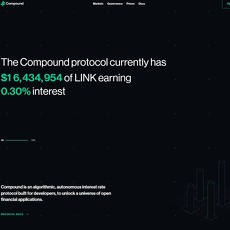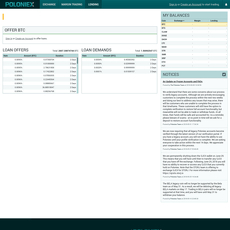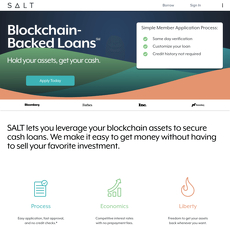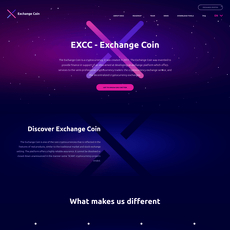Aave Review
Aave
aave.com
Aave Review Guide: Your Ultimate Gateway To Profiting With it?
Have you ever wondered if your idle crypto assets could actually earn you money rather than just sitting in your wallet? Or perhaps borrowing crypto quickly, securely, and without lengthy paperwork sounds appealing? If you're nodding your head right now, you're definitely in the right place—I had the same questions when I first heard about Aave. And judging by conversations with countless crypto enthusiasts visiting my site, Cryptolinks.com, I'm not alone. Let's clarify together exactly what's the deal with Aave and how it could potentially grow your money.
Why Navigating Aave Can Feel Confusing At First
If I'm honest—and you know I always am—even experienced cryptocurrency users have told me they initially found Aave a bit overwhelming. And frankly, I don't blame them. DeFi (Decentralized Finance) is an entirely new financial world, teeming with unfamiliar terms, complex possibilities, and yes, a bit of headache-inducing confusion. Aave, specifically, is renowned for its cutting-edge features and capabilities, but let's be real—it can feel like entering a maze for the first time.
Confusion often arises from:
- Multiple versions of the platform (V1, V2, and now V3)—What's the real difference?
- Unfamiliar lingo like "flash loans," "collateralization," and "variable APY"—words not exactly taught in school.
- Safety concerns, including audits, hacks, and risks inherent in crypto lending platforms.
I remember overhearing someone at a crypto conference say, "I love Aave, but honestly, I feel like I need an economics degree to really use it effectively!" And that's precisely why I wanted to talk openly about these difficulties, making sure you don't get stuck feeling that way.
How This Guide Solves Your Aave Problems
Luckily for you, I've created this easy-to-follow guide specifically to clear away the fog of confusion. My goal here is simple—to give you straightforward answers, real-life examples, and actionable tips so that you can confidently explore Aave's potential, without having to Google terms every second sentence.
This guide will:
- Clearly illustrate how safe Aave really is, including insights into the platform's security measures.
- Compare the different Aave versions, revealing exactly how they differ and what's best for your needs.
- Show you practical, tested, and easy-to-follow ways to potentially profit by using Aave.
What You'll Get Out of This Article
By the time we're done with this guide, you'll be fully equipped to navigate Aave with confidence, put idle crypto assets to work, or borrow funds strategically—enjoying new financial opportunities I wish someone had explained clearly when I first got into DeFi. Our journey together will unpack precisely how you could benefit from using this powerful decentralized finance platform.
Curious about what exactly Aave is and how it fits into our exciting DeFi landscape? Let’s check that out next.
Understanding Aave: What Exactly Is It?
Before we jump into how to earn from Aave, let me break it down simply. Understanding what this platform is and how it fits into the chaotic yet fascinating crypto world is your first step to making smart moves.
What is Aave?
In easy terms, Aave is a decentralized lending and borrowing platform built on Ethereum. Think of it like your traditional bank—but with no annoying physical branches, no long queues, and definitely no unnecessary paperwork. Instead, Aave runs on smart contracts, allowing anyone, anywhere to lend and borrow crypto without intermediaries or central authority.
Why does this matter for you as a DeFi user? For starters, it means freedom to borrow or lend your digital assets on your own terms. No more waiting for approvals or complicated credit checks—just swift, automated financial services accessible on demand.
How Does Aave Actually Work?
To make things clear, let me illustrate with an easy example:
- You have crypto sitting idle — You deposit your tokens (ETH, USDC, DAI, or others) into an Aave liquidity pool. Your crypto contributes to making funds available for borrowers, while you're earning a share of the interest.
- You need funds temporarily — You pledge your crypto as collateral to borrow other assets from the platform. No selling required; your assets stay yours and appreciate over the long term.
This straightforward lending-borrowing mechanism ensures everyone wins. Borrowers get immediate access to funds, while lenders see their crypto generate passive returns that traditional banks couldn't even dream of offering.
Key Innovations and Unique Features at Aave
What makes Aave truly stand out from countless DeFi platforms out there are the unique innovations it brings. Here are two groundbreaking examples:
- Flash Loans — Ever heard of borrowing millions without collateral, but only for a few minutes or even seconds? Aave introduced this revolutionary feature enabling savvy traders and developers to execute quick arbitrage trades or complex transactions without collateral, as long as they're repaid within the same blockchain block. Notice though, it requires some serious skills to pull off—definitely an innovation best attempted by seasoned crypto wizards.
- GHO - An Overcollateralized Stablecoin — Aave also introduced "GHO," their native stablecoin that's always fully backed with more collateral than its market value. According to expert analyses by ConsenSys, overcollateralization is a smart risk management approach and greatly reduces the dangers of stablecoins collapsing. Users can mint GHO seamlessly on the platform, generating liquidity securely and effectively.
These key innovations position Aave at the forefront of the DeFi scene, continuously improving financial opportunities for crypto enthusiasts like us.
"Innovation distinguishes between a leader and a follower." – Steve Jobs
In my experience reviewing countless crypto platforms, it's moments like discovering Aave's groundbreaking flash loans or GHO stablecoin that genuinely excite me. But before you start rushing to deposit or mint GHO tokens, there's something else you must know—exactly how safe is Aave lending? Worried about hacks, risks, or volatile returns?
Keep reading, because I'll cover how trustworthy and secure Aave actually is next. You'll soon find out if your crypto assets and profits are safe with this DeFi giant.
How Safe and Reliable is Aave Lending?
If you're anything like me, the first thing you wonder about any crypto investment is—how safe is your money really? Let's face it, no one wants to wake up to bad news about a hacked platform or vanished investments. After reviewing countless crypto platforms at Cryptolinks.com, I've learned that security should never be overlooked or compromised. Let's figure out once and for all if you can truly trust Aave with your digital assets.
Is Aave Actually Safe? – Security & Risks
Aave takes security extremely seriously, and that commitment quickly becomes clear as you study its history. How, exactly?
- Audits and Certifications: Aave has undergone regular, in-depth security audits from reputable firms like Trail of Bits, Certora, OpenZeppelin, and PeckShield. These independent audits help highlight vulnerabilities before they can become disasters. According to Certora, one of the industry-leading blockchain security firms, Aave smart contracts rank among the most thoroughly analyzed in DeFi.
- Proven Track Record: Unlike some DeFi platforms that have fallen prey to security breaches, Aave boasts an impressive record of zero hacking incidents directly attributable to its main protocol. Sure, DeFi carries risks inherently, but that clean security slate puts Aave in elite company.
- Decentralized Governance: What really comforts me about Aave’s security model is the community governance. Token holders, who naturally want the best for the platform, decide important security upgrades and changes—instead of just a small centralized team calling the shots.
Of course, nothing in crypto comes without at least some risk. Smart contract vulnerabilities and external exploits are always possible in DeFi, but compared to hundreds of platforms I've explored personally at Cryptolinks.com, Aave's sturdy reputation stands tall.
"An ounce of prevention is worth a pound of cure." – Benjamin Franklin
Franklin might not have known about crypto, but his words ring extremely true here. I strongly recommend always keeping updated with protocol changes, practicing healthy skepticism, and doing your own checks every once in a while. Let's look at some additional factors you need to understand clearly before lending your crypto on Aave.
Addressing Volatility and APY Concerns
As a crypto lender, volatility is something you'll feel all too clearly. Unlike returns from traditional savings accounts that remain steady, APYs (annual percentage yields) on crypto platforms—including Aave—can swing up and down based on market conditions and user demand.
For example:
- High-Demand, High Returns: When lots of borrowers seek funds simultaneously (due to market conditions or new opportunities), lenders are rewarded with higher APYs due to higher borrowing fees—sometimes exceeding double-digit returns.
- Lower Demand, Lower Returns: During quieter market days or low lender competition, your APYs naturally decrease. But even then, typically, you’ll still significantly outperform traditional bank savings rates, which average around a paltry 0.5%–1%.
A quick glance at past data from Aave confirms this volatility—lending APYs on popular assets like ETH or USDC have historically ranged from 2%-15%, depending on the time and market dynamic.
Bottom line: Don't expect constant guaranteed returns, view them as dynamic rewards driven by market conditions. Understanding this volatility is the key to successfully navigating and managing your lending strategies.
Tips for Safely Navigating Aave Risks
Safety never goes out of style. Here are my practical tips for confidently navigating risks when lending on Aave:
- Diversify Your Assets: Never put all your eggs in one crypto asset basket. Spread across multiple tokens to reduce individual coin volatility.
- Regularly Check on Platform Updates: The DeFi ecosystem evolves rapidly. Staying on top of recent governance proposals, audits, or security updates helps you avoid unpleasant surprises.
- Keep an Eye on Loan-to-Value Ratios (LTV): Opting for lower borrowing LTVs reduces liquidation risks, safeguarding your collateral in volatile market conditions.
- Have a Contingency Strategy: Know exactly the steps you'll take if the markets react strongly—don't wait for panic to set in to decide your exit or rebalance approach.
Now the important question you might have next—is it really possible to build sustainable profits on Aave in the long term? And if so, how exactly can you make money, grow your crypto investment, and minimize risks effectively?
Stick around—I'll show you clear, proven ways to utilize Aave’s strengths for solid earnings in the following section. Let's move forward and make sure you don't miss any profit-making insight.
Making Profit with Aave: How Does It Work, and How Can You Do It Too?
"Investing isn't about beating others at their game. It's about controlling yourself at your own game." – Benjamin Graham
The reason I'm excited to share this detailed part about profiting on Aave is simple—many crypto enthusiasts overlook real opportunities because they're wary of complexity. But once you understand just how straightforward making money with Aave can be, you'll feel like you've stumbled onto one of DeFi’s best-kept secrets.
How to Use Aave to Make Money
Let me guide you through how simple earning with Aave really is. You basically have two clear options: lending your tokens to earn steady interest or borrowing assets strategically to amplify your yield or profits.
Lending Your Crypto for Interest
First off, lending couldn't be easier on Aave. You just deposit supported tokens like ETH, USDC, DAI or other approved crypto assets into Aave's lending liquidity pools. You're essentially becoming the lender who provides funds for borrowers seeking instant capital.
The beauty here is you'll earn ongoing interest payments—often quoted as Annual Percentage Yield (APY)—directly from borrower fees. Your gains will accumulate every second, automatically compounding, and reflect instantly in your wallet on-screen. Sweet, isn't it?
A Simple Example:
- You deposit 10,000 USDC in an Aave liquidity pool offering a 4% APY.
- At the end of one year (assuming stable APY), your initial 10,000 USDC could earn approximately 400 extra USDC.
That's an effortless income increase—far more lucrative than traditional banks, where the average savings interest rate oftentimes barely scratches 0.1% per year (according to FDIC reports from 2023).
Borrowing for Strategic Profits
You can also smartly leverage borrowed funds on Aave to create profitable crypto strategies. A clever example I've personally witnessed users successfully perform:
- Deposit ETH as collateral and borrow stablecoins like USDC for a low APY (usually around 2-4%).
- Then use that borrowed stablecoin to reinvest elsewhere in DeFi with higher yields (perhaps another platform offering solid opportunities around 8-12% APY).
If you're careful adjusting collateral levels and managing risks (more on this in my insider tips below), borrowing to maximize returns can pay big dividends over time.
Insider Tips to Maximize Aave Profits
As the owner behind Cryptolinks.com, I've chatted with numerous experienced DeFi investors and have discovered some insightful tactics they've shared to maximize returns safely and securely with Aave:
- Regularly Compare APYs Across Pools: Yields change constantly. Keep an eye on returns and rebalance your crypto among high-performing pools once every month or so.
- Wisely Manage Your Collateral: Avoid liquidation risks by not borrowing excessive funds. Keep your Loan-to-Value (LTV) ratio lower than Aave’s recommended threshold (typically below 75%).
- Leverage Flash Loans (advanced tactic): Early adopters find flash loans powerful (though complex) tools. These instant, collateral-free loans allow savvy traders to capitalize on unique arbitrage opportunities across multiple DeFi platforms.
- Optimize Your Token Choices: It's sometimes smart to lend stablecoins during volatile crypto periods since they typically deliver steadier yields compared to fluctuating crypto like ETH or BTC.
Earning solid returns with Aave isn't magic—it’s strategic and influenced by smart asset choices and active risk management. I've seen it firsthand, and so can you.
But did you know the Aave platform itself can directly influence your returns? And there's something crucial you should know about Aave V2 vs. V3 that could drastically affect your profits and security—are you prepared for that? Keep reading because I'll be covering that key difference next, and it's something you definitely don't want to miss!
Exploring the Versions: What's New in Aave V3 Compared to V2?
If you're already familiar with Aave, you might wonder why they launched yet another version—Aave V3. Trust me, it's not just a fancy update; it comes packed with tangible improvements that directly affect your opportunities to earn interest safely and easily. So, let's cut straight to the chase: what's improved, and why should it matter to you and your crypto earnings?
Essential Differences Between Aave V2 and Aave V3
Think of it like upgrading your smartphone: sure, your older one might still work, but doesn't faster performance, improved security, and new handy features sound tempting?
- Optimized Capital Efficiency: Aave V3 introduces "Portal," allowing quicker and cheaper asset transfers across blockchains. In plain English, your money moves faster, cheaper, and more efficiently. Who doesn't appreciate a speed boost?
- Isolation Mode and Risk Management: V3 brings an extra security layer called Isolation Mode, limiting risk from newer or less liquid assets. Simply put, Aave has lowered the risk—you still get benefits, but without wild volatility.
- Better Decentralization with Oracle Improvements: Aave V3 significantly upgrades its decentralized price feeds, meaning more accurate prices and fewer hiccups in market swings. Fewer sleepless nights, guaranteed.
- Efficiency Improvements in Gas Fees: Let's face it, nobody likes high Ethereum gas fees. V3's more efficient coding means noticeably reduced fees—goodbye frustration, hello smooth lending.
To put this in real terms, a recent analysis by blockchain analytics company Messari estimated "Aave V3’s gas optimization methods reduce transaction costs up to 25% compared to V2." That's real money saved, straight back into your wallet.
"The difference between something good and something great is attention to detail." – Charles R. Swindoll
Clearly, Aave paid attention to details with V3. They've revamped every part that directly impacts your profit margins and safety on the platform.
Should You Upgrade to Aave V3?
I see this question popping up a lot among readers at Cryptolinks.com. Let's be real: if you're using V2 comfortably, it's natural to wonder if upgrading to Aave V3 is worth your time.
Let's make this simple. If any of the points below sound appealing to your investing goals, switching could be the right play:
- Would saving noticeable money on transaction fees matter to you?
- Would quicker, cheaper multi-chain transactions simplify your crypto life?
- Do enhanced safety measures like Isolation Mode put your mind at ease?
- Would improved asset price accuracy help you make smarter lending decisions?
If your answer to most of these questions is yes, then—it's safe to say volunteering for the update might genuinely improve your DeFi experience and investment results.
Still, before you leap, consider one critical point: upgrading to V3 also means revisiting your lending strategy and double-checking Aave's pros and cons carefully. Want to know exactly what these pros and cons are before you make a switch that could impact your earnings?
Keep reading below—because this is where it gets interesting and essential before you commit!
Pros & Cons of Using Aave You Must Know Before Diving In
I'm the type of reviewer who insists that readers know both sides before committing to platforms like Aave. To truly bring you value, I'm going to be blunt—and reveal both what's great about Aave and what might be problematic. After all, knowing the full picture is what separates smart crypto investors from the rest.
Let’s talk pros first—the reasons that make crypto enthusiasts excited about using Aave.
Strong Points in Favor of Aave
- Efficient and Multi-Network Ready: One thing I love about Aave is how it's not limited to Ethereum alone. For instance, it also supports the Avalanche, Polygon, and Optimism networks, helping you avoid excessive fees while providing flexibility. I know investors who saved hundreds just because of this cross-chain choice.
- Decent Yield Potential: Compared to traditional finance savings accounts (offering about 0.01%-0.5% APY), Aave offers far more attractive yields. Some tokens might yield anywhere between 2%-15% APY, depending on market activity. According to DeFiRate.com, Aave has consistently appeared among the top lending platforms because of its competitive rates.
- Innovative Features: Aave's pioneering creativity in DeFi is impressive. Take their flash loans, for instance: these uncollateralized loans enable developers—and savvy traders—to access large capital rapidly, opening doors for arbitrage opportunities and instant profits (assuming you know what you're doing!). Plus, innovative stablecoin solutions like GHO bring even more exciting possibilities to the table.
- Reliable Security Record: Aave's security history is reassuring—multiple successful public audits and a standout record of reliability make it one of the safer choices among DeFi protocols. Of course, investing always carries risks, but knowing the community consensus (on sites like DeFi Safety or Certik) rates its security highly adds to peace of mind.
But hey, no platform is a perfect paradise. Let's be honest about some shortcomings I've noticed when reviewing Aave.
Things to Watch Out For
- Volatile Rates and Market Conditions: While APYs can be high, they're also notoriously volatile. Today’s 10% yield can quickly become tomorrow’s 3%. Make sure you're continually tracking these adjustments to avoid unexpected surprises.
- Collateralization can Lock Up Your Funds: If you're borrowing crypto on Aave, you have to overcollateralize—that means locking up more than you borrow. Suppose you borrow $500 worth of crypto—you might need to lock in $750 or more. Those funds can't be freely spent or traded, affecting your liquidity and financial flexibility.
- Fees Still Exist—Watch Out! Ethereum gas fees (on mainnet) can pack a punch, especially during congested periods. If you're dealing in smaller amounts, high network costs might eat up your profit. If you’re a small investor, consider exploring alternative networks like Polygon or Avalanche on Aave to dodge those hefty Ethereum fees.
- Steep Learning Curve: To be transparent with you—Aave isn't exactly beginner-friendly. Especially if you're brand new to DeFi, you'll definitely face a bit of overwhelm at first. But don't let this discourage you; plenty of resources and guides (like this one!) are there to make your DeFi journey smoother.
"When investing, what's comfortable rarely is profitable." – Robert Arnott
I chose this quote intentionally: DeFi investing isn't about getting comfortable, it's about taking educated risks. But what if you have more burning questions about my experiences using Aave? Wondering what makes some users stick to the platform despite these potential downsides?
Hang tight—because in the next section, I'll answer the real questions everyone's asking in an ultra-clear FAQ format. Ready to see what really matters most to Aave investors like yourself? Let's find out.
FAQs About Aave: Let's Answer What You're Really Asking
If you're still wondering about some key things on Aave, I totally get it— crypto lending can feel overwhelming at times. The good news? You're not alone! Let's take a second to quickly and directly tackle the most pressing questions many of you have asked me:
How safe is Aave lending?
This one's probably the biggest elephant in the room—can you trust Aave with your funds? The short answer: Yes, generally speaking, Aave is pretty safe. Here's why:
- Open-Source Audited Protocol: Aave has undergone extensive auditing by reputable security firms like Trail of Bits and OpenZeppelin. This strongly reduces hack risks and vulnerabilities.
- Massive Liquidity: The platform maintains high liquidity pools, reducing market manipulation and enhancing the borrowers' and lenders' confidence.
- Transparent Track Record: So far, Aave has proven reliable without major security breaches, making their protocol a safer option in the DeFi lending space.
"In the crypto world, safety isn't just about who hasn't been hacked, but who proactively stays several steps ahead of potential threats. This is where Aave shines."
How to use Aave to make money?
The beauty of using Aave is straightforward: deposit your assets, earn passive interest, or borrow tokens against your crypto collateral and use that strategically. Let's quickly outline this:
- Earn Interest: Deposit popular assets like Ethereum (ETH), USDC, or DAI into Aave’s lending pools—collect sweet APYs based on demand.
- Leverage Borrowed Capital: Users borrow assets with their deposits as collateral. Smart investors borrow funds cheaply to invest elsewhere, multiplying gains while minimizing risks.
The key takeaway? Stay clear-headed, watch rates carefully, and responsibly leverage Aave to enhance your crypto returns.
What's the difference between Aave V2 and V3?
If you're debating whether to stick with V2 or move onto V3—you’ll notice a few main upgrades:
- Increased Capital Efficiency: V3 introduced features to deploy your capital more strategically, improving your returns.
- Upgraded Risk Management: Better decentralized oracle technology to stabilize APYs and reduce price manipulation risks.
- Multi-chain Flexibility: Enhanced support for cross-chain assets and greater flexibility for users aiming to diversify.
Is Aave actually good?
Absolutely! Whether you're new or seasoned in crypto, it's hard to deny Aave’s track record as a robust, secure, and user-friendly lending service. But keep in mind:
- It's ideal for those who are somewhat familiar with crypto concepts and comfortable managing collateral and market volatility.
- Not the best fit if you're searching for fixed, stable returns without risk—remember, it's DeFi territory.
Now I'm guessing your curiosity is growing: What's next? How do you effectively utilize Aave without confusion and what resources should you trust? Stick around—I'm about to reveal some highly useful and reliable tools that'll make your Aave experience smarter, safer, and, hopefully, a lot more profitable. Ready?
Useful Resources and Tools for Navigating Aave Easily
Let's face it—navigating any DeFi platform can seem overwhelming at first, and Aave is no exception. But luckily, there's a treasure trove of tools and resources designed specifically to simplify and enhance your experience with Aave. After extensively reviewing crypto tools for cryptolinks.com, I've carefully collected some that can make your journey with Aave much easier.
Now, you might be wondering: Is Aave the ideal choice for your specific financial goals and risk comfort zone? Should you start investing your crypto there immediately or are there important factors you're still unaware of?
You'll find out exactly what I think—and my honest, research-backed recommendation—coming up next. Curious yet? Let's help you connect all the dots clearly in the final segment.
Ready to Start Your Journey With Aave?
Now that we've come to the end of our deep exploration into Aave, you're equipped with everything you need to confidently enter or enhance your presence on this exciting DeFi platform. Let's quickly recap what matters most and give you my honest, experienced opinion on the platform.
Quick Recap of What We Covered
We've explored Aave from every essential angle, so here's just a short reminder of the key ideas we've picked up:
- Safety and Security: Aave boasts strong security measures, reputable external audits, reliable protocol upgrades, and a solid track record. While risks are present like in all DeFi platforms, smart caution and proper risk management strategies can keep you comfortable.
- Profit and Earning Opportunities: We've seen how lending and borrowing on Aave can provide solid, realistic returns compared to traditional financial products, often far exceeding traditional bank or savings interest rates. I've highlighted some insider strategies regularly used by successful users in the crypto community, allowing you to get started without guesswork.
- Versions & Upgrades (V2 vs. V3): Clearly, Aave V3 delivers meaningful enhancements—better capital efficiency, improved security, more options in base currencies, and streamlined operations—making your DeFi experience easier, safer, and potentially more profitable.
- Pros and Cons: As you remember, no platform is perfect. Aave offers great multi-network support, attractive yield potential, and advanced innovations like flash loans—but you should monitor fluctuating APYs, maintain awareness of collateral requirements, and always consider gas and transaction fees.
My Honest Recommendation as Cryptolinks.com Owner
I've closely studied and professionally reviewed countless crypto platforms daily through Cryptolinks.com, and here's my personal, straightforward take:
- If you're new to DeFi: Aave is an excellent beginner-friendly choice due to its intuitive interface, strong documentation, and strong credibility in the DeFi space. Of course, you'll face some learning curve, but it quickly pays off once you get the hang of it.
- Experienced crypto investors looking to diversify and earn steady returns: Aave should already be on your list. The platform offers competitive yields and numerous opportunities to put your crypto to work. Additionally, the upgrade to V3 demonstrates Aave’s consistent commitment to innovating and improving user experience.
- Investors wary of risk and volatility: While DeFi protocols can never be 100% risk-free, Aave stands among the most reliable options in this space. If you're cautiously exploring this world for steady growth, Aave might be your ideal entry point—just start with smaller amounts, understand the risks well, and gradually scale your participation.
Final Thoughts to Help You Decide—Is Aave Right for You?
Ultimately, your decision will depend on your risk tolerance, interest in DeFi solutions, investment goals, and how effectively Aave’s features align with your financial situation. For thousands of existing users I've spoken to, tested strategies with, and gotten feedback from over time, Aave provides a very compelling case—combining manageable risk, solid potential returns, and innovative financial tools that traditional banking simply can't match.
My recommendation: Give yourself the chance to experiment first-hand. Start with modest investments, stay educated, and keep an active eye on your positions. Soon enough, you'll know precisely whether or not Aave belongs in your crypto toolkit.
Got questions, doubts, or success stories with Aave? Reach out—I’d love for us to continue the conversation!








